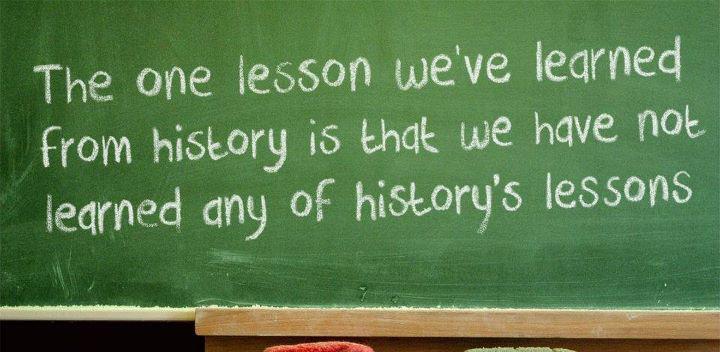Learning from Others’ Mistakes
0 comment
It is often said that we don’t learn from the mistakes of others; we must make their own mistakes. Yet, it is also often said that the importance of studying history is so that we don’t repeat the mistakes (that others made) of history. So, which is it?

Increasingly, I think it is the former, that people don’t learn from the mistakes of others. Is it that they don’t pay attention? That they think they are smarter; that it won’t happen to them? They can’t/don’t see themselves in those “others?”
Whatever the reason, this practice must stop. The failure of nonprofits to learn from the mistakes of others is costing individual nonprofits and the sector as a whole far too much. Every time an individual nonprofit repeats the mistakes of another, the brush with which our entire sector is painted gets a little dirtier and a lot broader.
When the Freeh report on the Sandusky scandal at Penn State came out, I suggested to every board with which I worked that it read the report. Based on the number of boards I’ve seen commit those same kinds of mistakes plainly detailed in that report, I suspect few read it.
Boards have allowed the executive director/president/CEO (the title makes no difference) to run the organization while the board stepped back and became a rubber stamp. They have failed to do their due diligence in making decisions, to provide oversight of the top paid leader, to ensure that their policies were being enforced, to demand data to inform their understanding of the organization, to be sure that they were leading an ethical culture, to be part of a system of checks and balances, and the list goes on.
Many of these organizations have gotten away with it, while others have not. The mistakes of the Penn State board were not the mistakes of confined to a board of an institution of higher education. They were the mistakes that boards of all missions and all sizes make on too frequent a basis. They are the mistakes that cost money and can bring an organization down. Think of the Wounded Warrior Project, the NRA, Livestrong, Hull House, your local nonprofits that no longer exist. Odds are good that the boards committed at least some of these mistakes, failing to learn from others.
For years, there had been questions about how the Florida Coalition Against Domestic Violence (FCADV) was using its money, paying its executive director an excessive salary, among other questionable expenses. Do FCADV board members not pay attention to the news outside of their immediate communities? Are they unaware that senators once threatened to cut off the allocation to the Boys and Girls Clubs of America because they believed the director was being paid an exorbitant salary? Do they not understand that board members have a responsibility to set the salary of the executive director and to do so based on some reasonable benchmarking? (The board chair of one of the member organizations of the coalition spoke of its executive director who had not only been on the board of FCADV but had been the treasurer; he said that she had no idea what FCADV’s leader was making. What is more embarrassing: admitting she didn’t know, or allowing such disproportionate compensation?) Why not learn from the mistakes of others?
And then there are those organizations who love to play ostrich, ignoring problems, hoping they will go away or, at least, won’t blow up in the organization’s face. Think the Philadelphia Museum of Art, the Boy Scouts, the Catholic Church, the Metropolitan Opera—and, sadly, this list could go on and on and on.
Speaking with my criminologist hat on, abusers are exceedingly difficult to reform. Ignoring them not only doesn’t resolve the issue, it creates a culture that says, loudly and clearly, this behavior is okay. Failure to condemn is an act of condoning. How many more stories of sexual, non-sexual physical and/or verbal abuse does a nonprofit need to read/hear before recognizing that these behaviors, left unchecked, can bring any organization to its knees, or worse. It can happen to any nonprofit, even the big and mighty, as we have seen. And it’s all preventable, with many examples to learn from?
Why do nonprofits wait until they have become today’s headlines to take a look at what they are doing versus what they should be doing?
The opinions expressed in Nonprofit University Blog are those of writer and do not necessarily reflect the opinion of La Salle University or any other institution or individual.
